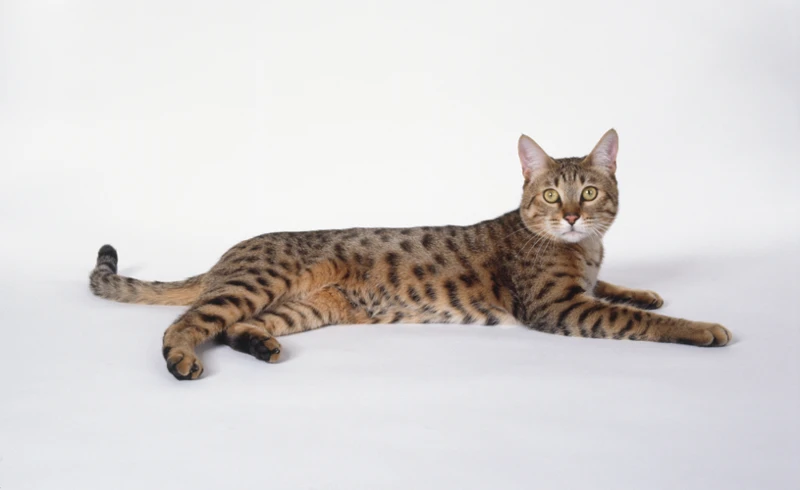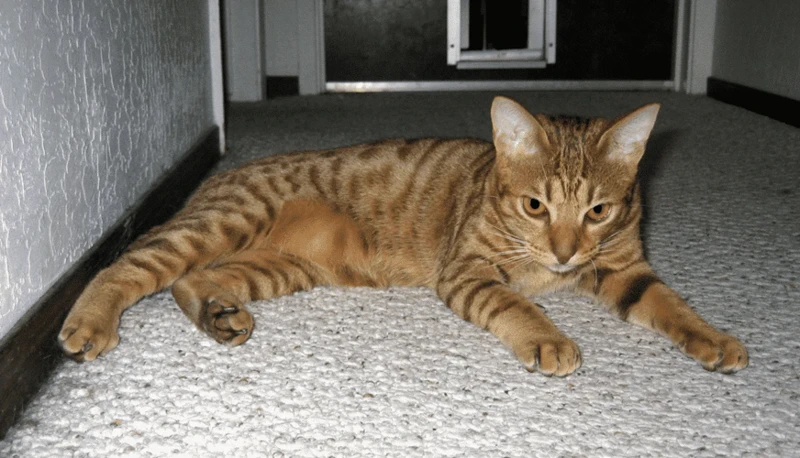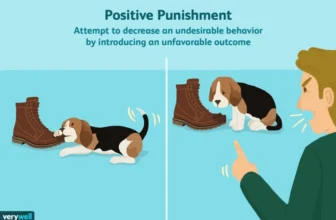As the proud owner of a California Spangled, you want to ensure that your furry friend is well-trained and obedient when on walks. Leash training is an essential aspect of owning a cat, but it can be tricky to master. In this article, we will guide you through the common mistakes to avoid when leash training your California Spangled. Whether you’re a novice or experienced cat owner, we’ve got you covered with our expert tips and tricks. Stick with us and learn how to leash train your feline friend like a pro.
Choosing the Wrong Leash or Harness

Finding the perfect leash or harness for your California Spangled cat can be a difficult task. It’s crucial to make sure you choose the right one for your cat’s specific needs. Using the wrong leash or harness can lead to discomfort, fear, and anxiety for your feline friend. Not to mention, it can cause harm if not used properly. Before you begin leash training, it’s essential to consider the options and make an informed decision. This step will allow you and your California Spangled cat to have a successful and enjoyable leash training experience. Let’s explore the common mistakes to avoid when choosing the wrong leash or harness. To learn more about the benefits of leash training your California Spangled cat, check out our previous article.
Not Fitting Properly
A common mistake many cat owners make when leash training their California Spangled is not fitting the leash or harness properly. This can be a frustrating situation for both the owner and cat, as the cat may not respond well to the feeling of something restrictive around their body. In order to prevent this problem, it’s important to choose the right equipment and ensure it fits well.
Using the wrong size or type of leash or harness can cause discomfort for your cat and make leash training more challenging. A poorly fitting harness can cause chafing, irritation or even injuries from excess pressure on the neck, chest or shoulders. Make sure to measure your cat’s girth, neck and chest properly and use those measurements to select the right size harness or leash. For California Spangled kittens, it may be necessary to purchase a smaller harness and collar to accommodate their small size.
Not tightening the harness or leash enough can also lead to issues during leash training , as your cat may be able to slip out of the harness or become too constricted by the leash. On the other hand, overtightening can cause pain and anxiety for your cat. Make sure to adjust the harness or leash until it feels snug, but not too tight or too loose. You should be able to fit two fingers under the harness or leash comfortably, but not more.
Lastly, it’s important to choose a harness or leash that aligns with your cat’s body shape and preferences. Some California Spangled cats prefer a more restrictive harness, while others prefer a harness with a more open design. Pay attention to how your cat reacts to different types of harnesses and adjust accordingly. Providing treats and positive reinforcement can also help your cat feel more comfortable wearing the harness or leash.
For more information on starting leash training with your California Spangled kitten, check out our article on starting leash training with your California Spangled kitten. If you’re looking for specific recommendations on the best type of leash or harness for your cat, read our guide on Cali Spangled leashes and leash training or take a look at our roundup of the best Cali Spangled cat leashes on the market.
Too Heavy
Choosing a leash or harness that is too heavy can be a common mistake when leash training your California Spangled cat. While it may seem like a sturdy, heavy leash would be more durable and secure, the reality is that it can actually be uncomfortable and even harmful for your cat. Here are some reasons why a heavy leash can be problematic:
| Issue | Explanation |
|---|---|
| Discomfort | A heavy leash can cause discomfort for your cat, as the weight of the leash can pull on their collar or harness and make it difficult to move around. This discomfort can lead to resistance and reluctance to participate in leash training. |
| Injury | The weight of a heavy leash can also increase the risk of injury to your California Spangled cat. If they pull too hard or suddenly stop, the weight of the leash can put strain on their neck and spine, potentially causing injury or discomfort. |
| Distracting | A heavy leash can be distracting for your cat, as they may be more focused on the discomfort and weight of the leash rather than on learning to walk on a leash. This can slow down the learning process and make the training less effective. |
Instead of opting for a heavy leash or harness, consider choosing a lightweight and comfortable option that will allow your California Spangled cat to move freely and comfortably while learning to walk on a leash. Look for adjustable options that can be customized to fit your cat’s specific body type, and always make sure to supervise your cat while they are wearing a leash or harness to ensure their safety and comfort. By taking the time to choose the right leash or harness for your cat, you can set them up for success and make the leash training process a positive and enjoyable experience for both you and your furry friend.
Expecting Too Much Too Soon

As a California Spangled owner, it’s understandable to be eager to train your feline friend to walk on a leash. However, it’s crucial to remember that leash training takes time and patience. Expecting immediate success can lead to frustration and setbacks in the training process. It’s important to understand that every cat learns at their own pace and pushing them too far too quickly can lead to negative associations with the leash and harness. In this section, we will explore the common mistakes made when expecting too much too soon and how to avoid them.
Rushing the Process
When it comes to leash training your California Spangled, rushing the process can lead to a lot of frustration for both you and your feline friend. It’s important to take things slow and at a pace that is comfortable for your cat. Here are some common mistakes to avoid when it comes to rushing the training process:
- Skipping Steps: It’s essential to start with basic obedience commands and then gradually move on to leash training if your cat is not used to being commanded. Skipping basic obedience steps can be detrimental to your cat’s training process.
- Expecting Instant Results: Leash training your California Spangled is not something that will happen overnight. It takes time, patience, and a lot of positive reinforcement for your cat to understand what you expect from them. Don’t expect too much too soon and celebrate small successes along the way.
- Overwhelming Your Cat: Leash training your California Spangled requires a lot of time and attention, so make sure to take baby steps. Don’t take your cat on long walks right from the start. Gradually increase the time you spend walking together and the distance you cover.
- Pushing Your Cat: Leash training can be stressful for some California Spangled cats, especially if they have a history of anxiety or fear. Don’t push your cat to do things they are not comfortable with or force them into situations that scare them. This will only make the training process more difficult and stressful for your cat.
By avoiding these common mistakes, you can ensure that your California Spangled has a successful leash training experience and that they are comfortable and happy during the process. Remember, patience, consistency, and positive reinforcement are key factors in training your cat to walk on a leash.
Not Starting Indoors
Starting leash training indoors may seem counterintuitive, but it can be a crucial step in helping your California Spangled feel comfortable on a leash. Many cats are easily overwhelmed by the sights and sounds of the great outdoors. By beginning the training process in a quiet and familiar environment, such as your home, you can reduce your cat’s stress levels and gradually introduce them to the sensation of being on a leash.
One key aspect of indoor training is getting your cat used to their leash and harness. Allow your cat to sniff and explore their gear in a safe and enclosed space. You can use treats and playtime as positive reinforcement, rewarding good behavior. This will help them build positive associations with their gear and feel more comfortable wearing it.
Once your California Spangled feels comfortable in their gear, you can begin introducing them to leash walking indoors. Start with short sessions and keep your cat’s favorite toys and treats nearby as a reward for good behavior. Use a clicker to signal when your cat has done well, and follow up with a treat. Consider using a treat puzzle, such as a Kong toy, to encourage your cat to stay focused on the task at hand.
Remember to stay patient and consistent. Your cat may need time to adjust to wearing their gear and walking on a leash, and it’s important to give them breaks when they need them. By starting leash training indoors, you can help your California Spangled feel confident and secure before venturing outside where distractions and new stimuli could cause fear or anxiety.
Pulling or Jerking the Leash

Walking your California Spangled on a leash can be a great bonding experience, but it’s important to do it right. Sadly, some pet owners make the mistake of pulling or jerking the leash, thinking they’re teaching their cat who’s in charge. However, this method often backfires and can lead to fear, anxiety, and negative associations. In this part of the article, we’ll explore why pulling or jerking the leash is a common mistake to avoid, and offer some positive training techniques instead.
Causing Fear or Anxiety
When leash training your California Spangled, it’s important to remember that pulling or jerking the leash can cause fear and anxiety in your cat. This can be detrimental to the training process, as your cat will associate the leash with negative feelings and may become resistant to training altogether.
Causes of Fear or Anxiety:
| Cause | Explanation |
|---|---|
| Physical Discomfort | A poorly fitting harness or leash can cause discomfort and pain for your cat, leading to fear and anxiety. |
| Loud Noises or Sudden Movements | Cats are sensitive to loud noises and sudden movements, which can startle them and cause anxiety. |
| Unfamiliar Environments | Training your cat in an unfamiliar environment, such as a busy street, can be overwhelming and stressful for your cat. |
It’s important to be patient and gentle during the leash training process to avoid causing fear or anxiety in your California Spangled. Make sure that the harness and leash are properly fitted to avoid any physical discomfort. Additionally, start training indoors in a quiet and familiar environment before gradually moving to more challenging outdoor environments.
Signs of Fear or Anxiety:
| Sign | Explanation |
|---|---|
| Hiding or Avoidance | If your cat hides or avoids the harness or leash, it could be a sign of fear or anxiety. |
| Dilated Pupils | Cats’ pupils dilate when they are scared or anxious. |
| Aggression or Agitation | If your cat becomes aggressive or agitated when the harness or leash is introduced, it’s a clear sign of fear or anxiety. |
If you notice any of these signs in your California Spangled, it’s important to stop training and take a break. Allow your cat to relax and become comfortable with the harness and leash before continuing the training process. Remember to always use positive reinforcement and avoid any punishment or negative associations with the leash to ensure a successful and stress-free training experience.
Leading to Negative Associations
When you pull or jerk the leash, it can easily lead to negative associations for your California Spangled cat. These negative associations can lead to several issues, including fear and anxiety during walks. It’s essential to consider that your cat’s first association with the leash will set up the tone for further leash training.
So, what kind of negative associations can be caused by pulling or jerking the leash?
| Negative Associations | Consequences |
|---|---|
| Fear of the leash | Your cat may become frightened or anxious when the leash is presented, leading to reluctance to participate in training or a walk. |
| Fear of outside environments | If you’re jerking the leash too hard, your cat may associate the harshness with the environment. This can lead to fear or reluctance to go outside at all. |
| Refusal to cooperate | If your cat associates the leash with negative experiences, they may become less willing to cooperate in training, leading to more difficult training sessions. |
| Fear of you | If you’re continually pulling or jerking the leash and not providing positive feedback, your cat may associate the negative experiences with you. This can cause your cat to be afraid of you or avoid you entirely. |
It’s essential to remember that cats are sensitive creatures and can hold onto negative associations for a long time. It’s crucial to avoid creating these negative associations in the first place when leash training your California Spangled cat. Remember to be patient, use positive reinforcement, and always work within your cat’s pace to ensure a positive leash training experience.
Not Using Positive Reinforcement

Have you ever tried to leash train your California Spangled without using positive reinforcement? It can be frustrating for both you and your furry friend. If you’re not rewarding good behavior and only punishing bad behavior, your cat may not understand what exactly you’re trying to teach them. Punishing bad behavior may even lead to a negative association with the leash altogether. Let’s explore how positive reinforcement can make a huge difference in your leash training efforts.
Not Rewarding Good Behavior
Positive reinforcement is one of the most important parts of leash training your California Spangled. It’s essential to reward your cat for good behavior. Many pet owners focus on correcting undesirable behavior, without acknowledging the things their cat is doing right. Failing to reward good behavior could result in a cat that is hesitant or resistant to leash training.
To avoid this mistake, create a reward system for your cat. This could include giving your cat their favorite treat or toy whenever they follow the leash’s rules. You should always reward your cat immediately after they exhibit good behavior. This will help your cat link the action with the positive reinforcement, making them more likely to continue displaying good behavior.
To further encourage good behavior, introduce verbal cues such as “good job” or “good cat” to reinforce their actions. Giving your cat verbal praise alongside rewards will create positive associations between good behavior and rewards.
Here are some ways to reward good behavior during leash training:
- Offer treats: Use their favorite treats to encourage good behavior and reinforce positive associations.
- Use toys: Toys can be a great reward and provide your cat with extra enrichment.
- Verbal cues: Use verbal cues for positive reinforcement and a bit of extra encouragement.
- Pet Your Cat: Many cats enjoy physical affection. Praise them with good pets and scratches.
Giving your California Spangled rewards for good behavior helps reinforce positive behaviors and encourages them to continue exhibiting good behavior. Remember to keep the rewards high-value and consistent, so your cat remains motivated to follow leash training rules.
Punishing Bad Behavior
When leash training your California Spangled, it’s important to remember that punishment for bad behavior can have negative consequences. Punishing your cat can result in fear, anxiety, and a breakdown in the trust between you and your pet. Rather than punishing bad behavior, it’s best to focus on rewarding good behavior and redirecting your cat’s attention when they do something you don’t want them to do.
Here are some common punishments to avoid:
| Punishment | Problems it can cause |
|---|---|
| Yelling or shouting at your cat | Causes fear and anxiety, damages trust between you and your pet |
| Spraying your cat with water | Can cause fear and anxiety, may not address the root of the bad behavior |
| Physically punishing your cat (such as hitting or spanking) | Can cause physical and emotional harm, damages trust between you and your pet |
Instead of punishing bad behavior, focus on redirecting your cat’s attention towards something positive. For example, if your cat starts pulling on the leash, stop and call their name. When they look at you, reward them with a treat or praise. This helps your cat associate good behavior with positive rewards and encourages them to repeat that behavior in the future.
Remember, leash training takes time and patience. By avoiding punishments and focusing on positive reinforcement, you can build a strong bond of trust between you and your California Spangled.
Not Considering Your Cat’s Personality
As a pet owner, it’s important to remember that each cat has their own unique personality. It’s easy to assume that all California Spangled cats will respond the same way to leash training, but this is not the case. Not taking into account your cat’s individual personality can lead to frustration for both you and your furry friend. It’s crucial to learn about your cat’s likes, dislikes, fears, and overall temperament in order to successfully leash train them and ensure a positive experience for all. Let’s delve deeper into how not considering your cat’s personality can hinder the leash training process.
Ignoring Fears or Preexisting Anxiety
When leash training your California Spangled, it’s essential to consider their personality and any existing fears or anxieties they may have. Ignoring these can lead to a negative training experience and undermine your progress with your feline friend.
Some California Spangled cats may have a history of abuse or trauma, which can lead to a heightened sense of fear or anxiety. For these cats, the leash training process can seem overwhelming and even terrifying. You need to be patient and understanding of your cat’s unique needs, and be willing to adapt the training process to suit them.
One way to help your California Spangled overcome their fears or anxieties is to start with short and low-stress training sessions. Begin indoors or in your backyard, where your cat feels most comfortable to start building their confidence. Over time, as your cat becomes more comfortable, gradually increase the length and intensity of the training sessions.
Another important consideration is to avoid loud or sudden noises, which can trigger your cat’s fear response. Additionally, consider using calming aids, such as calming pheromone sprays or treats, to help soothe your cat’s nerves during the training process.
Ignoring your California Spangled’s fears or preexisting anxiety can have a harmful impact on their training progress. By starting slowly and adapting your training methods to cater to your cat’s unique needs, you can help them build their confidence and trust in you, creating a strong foundation for successful leash training.
| Do | Don’t |
|---|---|
| Start with short and low-stress training sessions | Force your cat to continue if they become overwhelmed or frightened |
| Be patient and understanding of your cat’s unique needs | Use loud or sudden noises during training sessions |
| Adapt the training process to suit your cat | Ignore your cat’s fears or preexisting anxiety |
| Use calming aids such as calming pheromone sprays or treats | Rush the process and expect too much too soon |
Not Adapting to Your Cat’s Pace
One common mistake when leash training your California Spangled is not adapting to your cat’s pace. Each cat has their personality, comfort level, and energy level. Some cats may take to leash training quickly and eagerly, while others may require more time and patience. It’s essential to understand and respect your cat’s individuality and pace when leash training them.
Here are some ways you can adapt to your cat’s pace:
- Start Slowly: Some California Spangled might be hesitant or fearful when it comes to going outside or being on a leash. Start training slowly, and don’t force them to move beyond their comfort level.
- Gradually Increase the Time: Don’t push your cat to walk for too long initially. Start with a short walk and gradually increase the duration as they become more comfortable with the process.
- Pay Attention to Your Cat’s Body Language: Leash training should be a positive experience for your cat. Be aware of their body language, and if you notice any signs of discomfort or distress, slow down or take a break.
- Be Patient: Every cat is different. Some may take to leash training immediately, while others may need more time to feel comfortable with the process. Be patient and consistent, and eventually, your California Spangled will learn to walk comfortably on a leash.
By adapting to your cat’s pace and taking things slow, you can create a positive and enjoyable learning experience for your California Spangled. Remember, patience and consistency are the keys to successful leash training.
Conclusion
In conclusion, leash training your California Spangled can be a daunting task, but with patience and consistency, it can be a rewarding experience for both you and your furry companion. Remember to choose the right leash or harness that fits properly and is not too heavy. Do not expect too much too soon and rush the process, as this may cause fear or anxiety in your cat and lead to negative associations. Instead, start indoors and gradually progress to outdoor environments. Avoid pulling or jerking the leash, as this can also cause fear and anxiety. Use positive reinforcement and reward good behavior while avoiding punishment for bad behavior. It’s important to consider your cat’s personality and adapt to their unique pace and needs. If your cat has preexisting fears or anxiety, it’s important to address these before beginning leash training. Remember to be patient and consistent, and your California Spangled will soon be enjoying outdoor adventures with you.
Frequently Asked Questions
How long does it take to leash train a California Spangled?
It can take several weeks to several months to fully leash train a California Spangled depending on their personality and experience with walking on a leash.
Can I leash train an older California Spangled?
Yes, older California Spangleds can be leash trained, but it may take more patience and consistency to overcome any ingrained habits or fears they may have.
Do I need a specific collar or harness for leash training?
It is recommended to use a harness instead of a collar for leash training a California Spangled. It should fit properly and not be too heavy or restrictive.
Should I start leash training my California Spangled indoors or outdoors?
It is best to start leash training your California Spangled indoors in a calm and familiar environment before gradually transitioning to outdoor walks.
Is it okay to let my California Spangled pull on the leash?
No, it is not okay to let your California Spangled pull on the leash as it can lead to negative associations and create anxiety or fear.
What kind of positive reinforcement works best for leash training?
Rewarding good behavior with treats, verbal praise, or affection can work well for leash training a California Spangled.
Should I punish my California Spangled for bad behavior during leash training?
No, punishment is not an effective way to leash train a California Spangled. Instead, redirect their focus and reward good behavior.
What are some signs that my California Spangled is scared or anxious during leash training?
Some signs include cowering, pulling away, whimpering, or refusing to walk. It is important to stop and address their fears before proceeding with training.
How can I adapt to my California Spangled’s personality during leash training?
By observing their body language and adjusting your pace or methods accordingly, you can tailor leash training to fit your California Spangled’s unique personality and needs.
Why is leash training important for California Spangleds?
Leash training can provide exercise, mental stimulation, and socialization for California Spangleds, while also ensuring their safety and preventing them from getting into dangerous situations.







